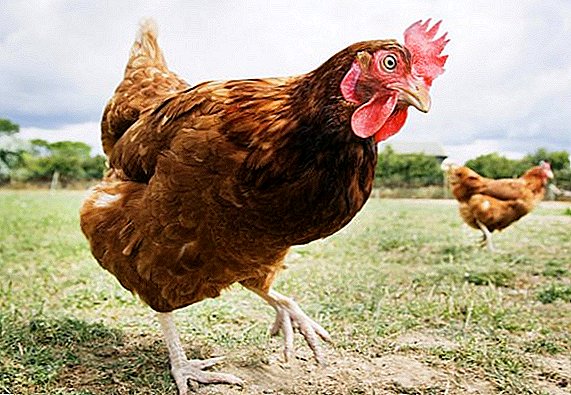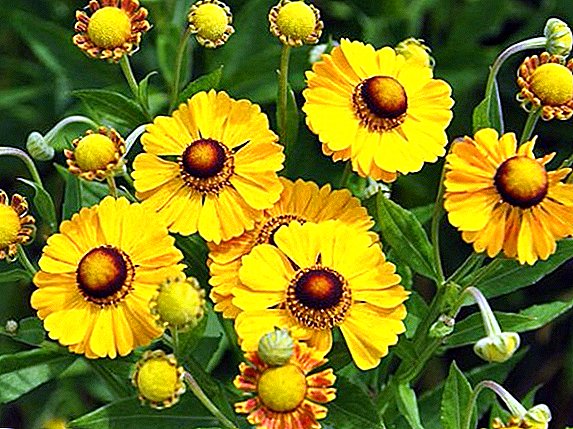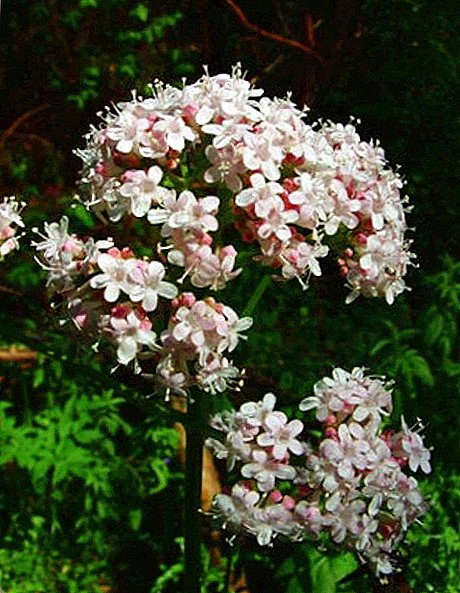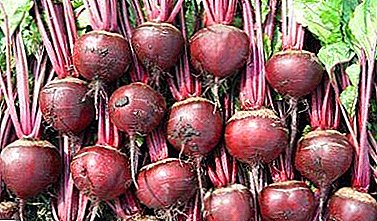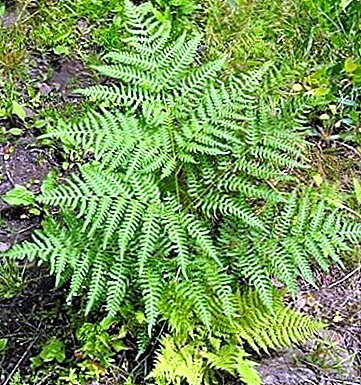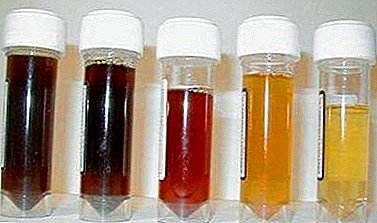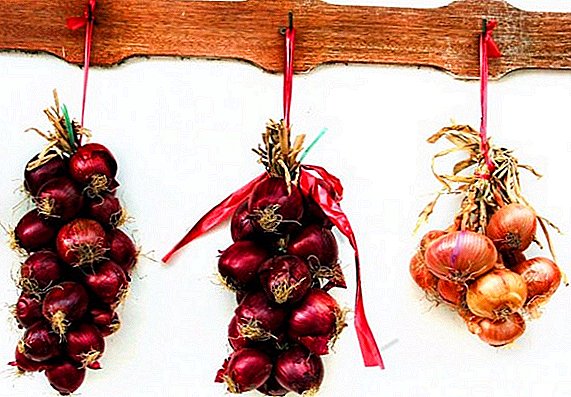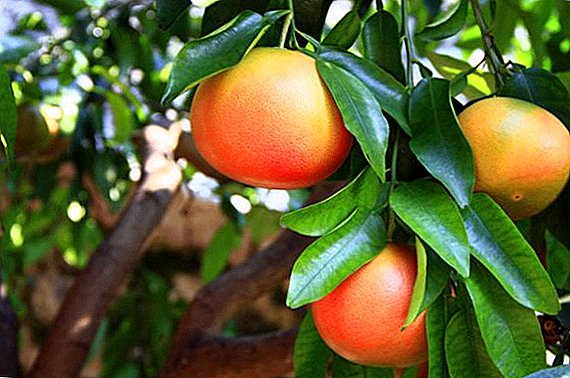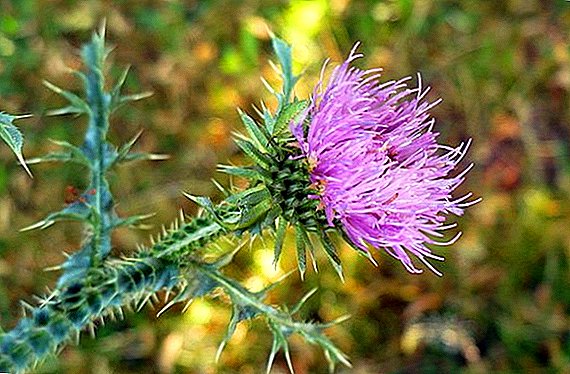 The healing properties of milk thistle, or, as it is also called in Russia, the thistle, have been known for a long time. All the positive characteristics of this plant are due to the huge amount of bioactive substances (of which more than 400) contained in it. How to grow a thistle from the seed, how to properly prepare it, as well as when to plant it, and will be discussed in this article.
The healing properties of milk thistle, or, as it is also called in Russia, the thistle, have been known for a long time. All the positive characteristics of this plant are due to the huge amount of bioactive substances (of which more than 400) contained in it. How to grow a thistle from the seed, how to properly prepare it, as well as when to plant it, and will be discussed in this article.
Botanical description
The height of the plant varies between 60–200 cm, the stem is straight with lettuce or dark green leaves, which are covered with a network of silver-pearl spots and have long, yellowish thorns on the rim.
The inflorescences of this one or two-year-old plant are lilac baskets with a diameter of 4-7 cm. The seed fruit may have a light brown, gray or black color.
The leaves that frame the basket also bear sharp spines. The end of each seed is crowned with a tuft of hairs, each of which is several times longer than the fruit itself. 
Weed or ornamental plant?
Milk thistle - if it was intentionally planted and taken care of it in the open ground - can not be considered a weed. But the plant has a rather pronounced weedy potential: it often disperses on its own in fields, vacant lots and along roads.
In the case of thistle growing on the same territory as cultivated plants, it is recommended to destroy it, since it affects the yield and “takes away” a significant amount of moisture and nutrients from its neighbors.
Did you know? Dried thistle leaves can be used as tea.
Some gardeners grow this plant in their flower beds. For this, those varieties in which the leaves have a bright color and retain large basal rosettes up to the death of the whole plant in the autumn are best suited. 
Landing place
For planting this annual will fit almost any piece of land. The main thing is that it is not swampy and well lit by the sun.
If you intend to get the best aesthetic effect from this plant, you should make a landing next to the stones, it will be especially beneficial to look in flat rock type. A small group of these plants will also stand out well against a green lawn.
Sowing Thistle
It is possible to grow milk thistle only from seeds. Vegetative breeding methods are not applicable to this plant due to the short period of its existence. Milk thistle can be grown as seedlings and planted in open ground.
Important! It is not recommended to take pharmaceutical seeds for breeding, as they are likely to be stored incorrectly or have grown old.

To seedlings
For this technique, it is necessary to prepare in your house a certain amount of fertile soil and several oblong flower pots. Sowing seedlings is recommended in late March or early April.  Transplantation of ascended plants in open ground should occur in early to mid-May. This method is good because it allows you to get a batch of medicinal raw materials earlier than when landing directly into the ground.
Transplantation of ascended plants in open ground should occur in early to mid-May. This method is good because it allows you to get a batch of medicinal raw materials earlier than when landing directly into the ground. 
Straight
Before sowing, it is recommended to bring up to 4 kg of humus per 1 sq. M. m, 40-60 g of complex mineral fertilizers, as well as 1-2 cups of wood ash. Seeds are brought into the land in rows, the distance between which should be at least 0.5 m.
The depth to which the seeds are applied should not exceed 2-3 cm. If you plan to cultivate milk thistle in large areas, then you should know that its seeding rate is 8-10 kg / ha.
Important! For best results, the distance between plants should be at least 40 cm.
Seeds need to be soaked in water for several hours before planting. The first shoots begin to appear after 7-12 days. You should not panic, if a part of the plants did not ascend during this period - this is dictated by the biological features of this plant, in connection with which the timing of emergence of shoots may vary greatly. 
Thistle care features
Thistle has significant drought tolerance and is generally quite unpretentious to environmental conditions. However, it is worth moistening the soil under it in particularly dry months, which will allow it to retain longer juicy colors and freshness of its leaves.
Top dressing is also not a prerequisite for its cultivation, however, if necessary, any complex mineral fertilizers and humus will do. The plant is well protected from pests and diseases due to the peculiarities of its structure, so do not be afraid of them.
Did you know? According to legend, the healing properties of the thistle were indicated to the people by the Virgin Mary, and the marble spots on the leaves symbolize drops of her milk.
Few of the beneficial properties
For medicinal purposes, milk thistle seeds and roots are often used, but the leaves and the stem can also be of benefit to humans. They, for example, can be used as a fodder crop for livestock, and if they are pre-cleaned of thorns, they can also be enjoyed by people.
 Milk thistle in one form or another is part of such well-known drugs like Karsil, Hepatinol, Silibor, and many others.
Milk thistle in one form or another is part of such well-known drugs like Karsil, Hepatinol, Silibor, and many others.
The useful milk thistle
The main positive effect of the thistle, which will be useful for absolutely every person, is its hepatoprotective properties. It helps the liver to metabolize harmful breakdown products and quickly remove them from the body.
Very beneficial to the liver also affect: black currant, white currant, fennel, silver sucker, aloe, parsley, upside down amaranth.The same property makes it possible to successfully apply it against diseases such as hepatitis C, fatty liver, cirrhosis of various origins, inflammation of the bile ducts and gallstone disease.
Thistle seeds in addition to a significant set of vitamins, fatty acids and trace elements also contain a unique substance - silymarin.  It has a pronounced antioxidant effect, is involved in the regulation of cell membranes and accelerates the processes of repair and regeneration of damaged cells.
It has a pronounced antioxidant effect, is involved in the regulation of cell membranes and accelerates the processes of repair and regeneration of damaged cells.
Another important advantage: preparations from the seeds of the thistle have no contraindications to use, except for the individual intolerance of the patient.
Procurement rules
Seed collection is recommended in the period from August to October, due to the uneven maturity of seedlings in each of the individual representatives of this species.
Recognize that the seeds of the thistle are ready to be harvested, you can by flying "parachutes" with the seeds and the acquisition of a basket of yellowish hue.  It is possible to start cutting fruits when a white down is formed in the baskets themselves. Achenes are cut with a secateur, after which they are laid on a sieve, under which a newspaper or cloth is spread ahead of time.
It is possible to start cutting fruits when a white down is formed in the baskets themselves. Achenes are cut with a secateur, after which they are laid on a sieve, under which a newspaper or cloth is spread ahead of time.
After the baskets have dried, they should be freed with scissors from leaves and prickles, broken and shake out the seeds.
The obtained seed must be dried for another week, after which you can remove the seeds ready for use in a jar. The shelf life of such seeds is 3 years.  The roots are harvested in the same period as the seeds. After removing them from the ground and rinsing under running water, it is worthwhile to grind them and straighten them to dry in an oven with a temperature of 40-50 ° C, or leave them indoors.
The roots are harvested in the same period as the seeds. After removing them from the ground and rinsing under running water, it is worthwhile to grind them and straighten them to dry in an oven with a temperature of 40-50 ° C, or leave them indoors.
Dry roots should be stored in a closed glass jar. The shelf life of the roots - 1 year.  Planting only 20 thistle bushes on your site will provide you with enough seeds and roots for a ready course of treatment and prevention of liver diseases.
Planting only 20 thistle bushes on your site will provide you with enough seeds and roots for a ready course of treatment and prevention of liver diseases.
The plant is unpretentious, quite simple to care and brings significant benefits. What other arguments are needed to start its cultivation?


